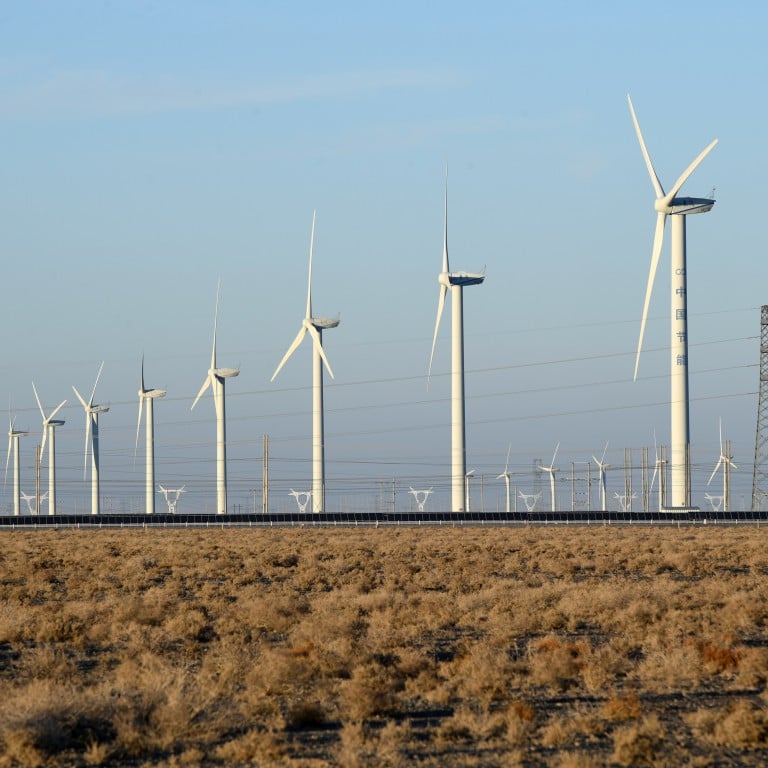
US-China clean energy decoupling ‘nearly impossible’, risks global climate change fight, study says
- Study finds collaboration on low-carbon technologies has manageable risks, while decoupling will slow tech deployment needed for the energy transition
- In some areas, the level of integration is already so great that true decoupling would be ‘nearly impossible’ and create more costs rather than savings
US decoupling from China on clean energy technologies could create more economic risks than benefits, while harming global efforts to mitigate climate change, according to a new study.
The United States and other Western nations, meanwhile, are rethinking their reliance on Chinese supply chains, including for renewable energy products, due to national security concerns.
But a new study published in the journal Science has found collaboration on low-carbon technologies poses limited risks, while decoupling will slow deployment of technology needed to to transition away from fossil fuels.
“Policymakers in Europe and North America have justified decoupling with concerns about future national economic competitiveness, since domestic markets for key energy technologies are now highly dependent on imports from a geostrategic competitor,” the study said.
“Across numerous technology areas, the level of integration is so great that true decoupling would be nearly impossible and potentially counterproductive to national interests.
“For most technologies, the decoupling ‘cure’ is likely to be worse than the ‘integration’ disease.”
A major benefit of integration is making these technologies more affordable
But national security threats were muted across the various low-carbon technologies, according to the study titled “Risks of decoupling from China on low-carbon technologies”.
“Tackling climate change in the US and especially in the developing world is heavily dependent on having affordable and available low-carbon technologies,” said the study’s lead author Michael Davidson from the University of California San Diego.
“A major benefit of integration is making these technologies more affordable, in addition to increased innovation. Therefore, when throwing up barriers to integration, we need to be objective about the specific policy goals and how they might influence our ability to address the threat of climate change.”
US calls for decoupling from China partly stem from the idea that trade reliance could lead to domestic job losses. But the study said decoupling also posed a threat to employment.
Suspension of China-US climate talks clouds prospects for joint research
“Long-term reorganisations of supply chains have implications for upstream jobs,” the study said. “If supply chain disruptions cause increases in costs and a reduced ability to deploy products, downstream jobs are also at risk.”
More than 255,000 workers were employed in the US solar industry last year, according to the 12th annual National Solar Jobs Census, and most were concentrated in downstream industries.
“Building [photovoltaic] panels is usually the least labour-intensive part of the whole enterprise, there are typically a lot more people involved in project development, installation, maintenance and operations of solar,” the study said.
“These jobs are difficult to outsource; however, they are impacted when the cost of PV increases.”
In areas where risks are low and mutual benefits likely to be high, technological collaboration and supply chain integration could help accelerate mass manufacturing and technological innovation, the study said.


